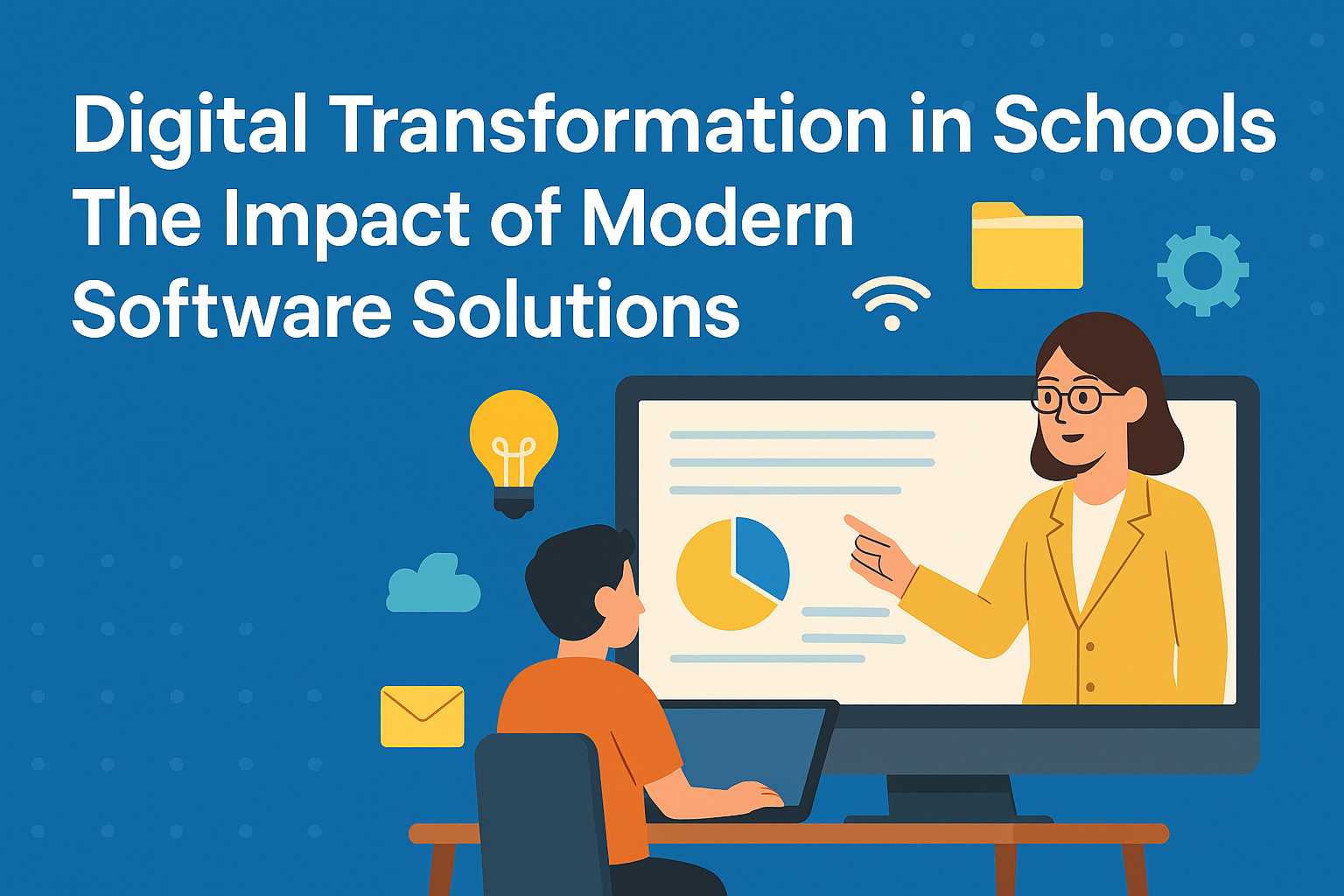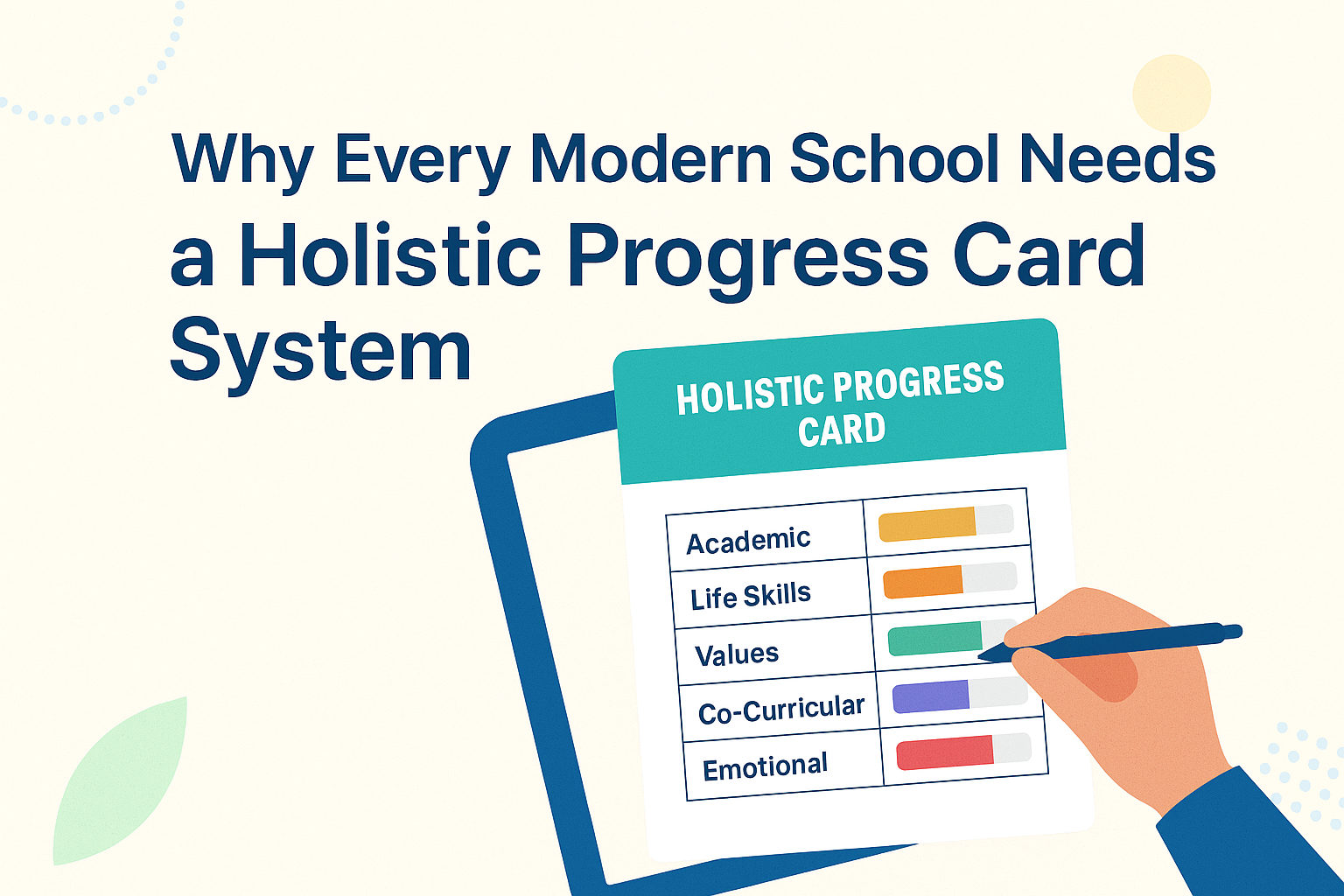Digital Transformation in Schools: The Impact of Modern Software Solutions

Strong 8k brings an ultra-HD IPTV experience to your living room and your pocket.
In today’s fast-evolving digital landscape, education is no longer confined to textbooks, whiteboards, and face-to-face interactions. As industries worldwide embrace technology to streamline operations and improve efficiency, schools are also stepping into a new era of digital transformation. This shift is not just about incorporating smartboards or online classes—it’s about fundamentally rethinking how schools operate, communicate, and deliver value to students, parents, and stakeholders.
At the heart of this transformation is the adoption of modern software solutions, particularly school ERP systems, which have become the backbone of efficient and future-ready educational institutions.
What is Digital Transformation in Education?
Digital transformation in education refers to the comprehensive integration of digital technology into every aspect of school operations—from administration and communication to teaching and learning. It’s not about replacing human efforts with machines but enhancing productivity, reducing errors, and enabling better decision-making.
For school owners, this transformation offers a strategic advantage. It allows schools to operate more like efficient organizations—faster decision cycles, real-time data access, cost control, and better stakeholder engagement.
Key technologies fueling this transformation include:
- Cloud computing
- Automation tools
- ERP for Schools
- Mobile applications
- AI-powered data analytics
- Learning Management Systems (LMS)
The Role of School ERP in Driving Digital Transformation
A school ERP (Enterprise Resource Planning) system is a comprehensive software solution that automates and integrates the key administrative and academic functions of a school. Think of it as a central nervous system that connects departments, reduces duplication of efforts, and provides real-time insights.
A modern school ERP typically includes modules for:
- Admissions and enrollment
- Attendance tracking
- Fee and financial management
- Timetable scheduling
- Report cards and assessments
- Staff and payroll management
- Communication tools (SMS, email, app notifications)
- Inventory and asset tracking
For school owners, this means gaining centralized control over every operational element, ensuring that no detail slips through the cracks.
Why School Owners Should Care
A school ERP isn't just a tech upgrade—it's a growth tool. It enables:
- Efficient resource utilization
- Increased accountability among staff
- Streamlined workflows
- Parent satisfaction through transparency
- Scalable systems that grow with the institution
When implemented thoughtfully, it transforms your school into a modern, agile organization that can respond quickly to change.
7 Ways Modern Software Solutions Are Revolutionizing School Management
Let’s explore the practical ways digital solutions—especially school ERP systems—are transforming school operations:
1. Automated Administrative Processes
Tasks like student enrollment, attendance, timetable generation, and exam scheduling can consume hours of staff time. With ERP, these are handled in a few clicks, reducing human error and freeing up staff to focus on higher-value tasks.
2. Improved Financial Oversight
From tracking fee payments to generating financial reports, ERP systems ensure transparency and accuracy in school finances. School owners can view real-time dashboards showing due payments, expenses, and income—all from one place.
3. Enhanced Communication and Collaboration
Modern ERPs integrate communication tools such as SMS alerts, mobile app notifications, and email, ensuring that parents, teachers, and students stay informed. For school owners, this enhances reputation and reduces miscommunication.
4. Smarter Academic Planning
School ERP tools allow administrators to plan curriculums, assign teachers, and monitor academic calendars efficiently. Data on student progress can help identify performance gaps early, improving academic outcomes.
5. Data-Driven Decision Making
One of the key advantages of digital transformation is the access to actionable data. From student performance analytics to financial forecasting, school owners can make informed decisions supported by real-time insights.
6. Remote Learning Integration
Especially post-pandemic, integrating LMS tools with your school ERP allows for a seamless online or hybrid learning experience. Assignments, assessments, and feedback can be digitized and monitored remotely.
7. Regulatory Compliance and Security
Most ERP systems help ensure schools meet local education board regulations by automating reporting and maintaining secure digital records. With increasing concerns around data security, this is no longer optional.
How to Choose the Right School ERP for Your Institution
Selecting the right ERP software is crucial. Here's a checklist of what to look for:
Core modules that match your school’s needs
- Mobile accessibility
- User-friendly interface for non-tech-savvy staff
- Strong data security protocols
- Cloud-based with regular backups
- Customizable features
- Excellent customer support and onboarding
Ask vendors these key questions:
How often is the system updated?
Can it integrate with existing tools (like LMS or accounting software)?
What support and training are offered post-implementation?
Future Trends in School Software
The education sector is evolving rapidly. Here’s what school owners should watch for:
AI-Powered Insights: Predict student performance and identify drop-out risks early.
Mobile-First Solutions: More ERP features accessible via smartphones and tablets.
IoT Integration: Smart attendance using facial recognition or ID card scans.
Government Push for Digital Schools: Regulatory support and funding for digitization.
Staying ahead of these trends will ensure your school remains competitive and attractive to tech-savvy parents and students.
Conclusion
The digital transformation of schools is not a trend—it’s the new normal. For school owners, the question is no longer if you should digitize but how soon you can start. Investing in the right school ERP and supporting software solutions gives you a scalable, cost-effective path to streamlined operations, data-informed decisions, and improved student outcomes.
Ultimately, modern school software empowers school owners to do what they do best—focus on education, not administration.
Note: IndiBlogHub features both user-submitted and editorial content. We do not verify third-party contributions. Read our Disclaimer and Privacy Policyfor details.







